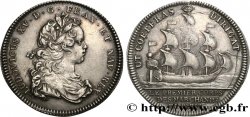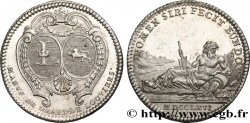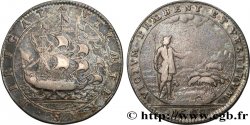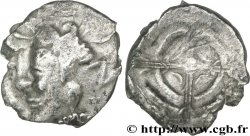fjt_526882 - CORPORATIONS Premier corps des marchands, drapiers et tisserands de laine 1698
250.00 €(Approx. 282.50$ | 212.50£)
Quantity
Add to your cart

Type : Premier corps des marchands, drapiers et tisserands de laine
Date: 1698
Metal : silver
Diameter : 28 mm
Orientation dies : 12 h.
Weight : 8,07 g.
Edge : Lisse
Rarity : R3
Coments on the condition:
Très jolie patine de médaillier
Catalogue references :
Obverse
Obverse legend : VT. CÆTERAS. DIRIGAT.
Obverse description : Écu aux armes des drapiers : un navire d'argent à la bannière de France flottant, un œil en chef, le tout en champ d'azur.
Obverse translation : Pour diriger les autres corporations.
Reverse
Reverse legend : VICTVM. PRÆBENT. ET. VESTITVM ; À L'EXERGUE : 1653.
Reverse description : Un berger à droite, appuyé sur son bâton, surveille son troupeau.
Reverse translation : Ils lui fournissent subsistance et vêtements.
Commentary
La référence Feuardent 4800 est une variété sur laquelle le berger est redressé, le bras gauche tendu vers son troupeau. Feuardent l’indique comme étant une refrappe, ce qui semble assez étonnant pour cet exemplaire.








 Report a mistake
Report a mistake Print the page
Print the page Share my selection
Share my selection Ask a question
Ask a question Consign / sell
Consign / sell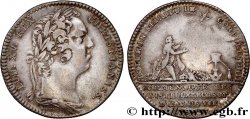
 Full data
Full data
